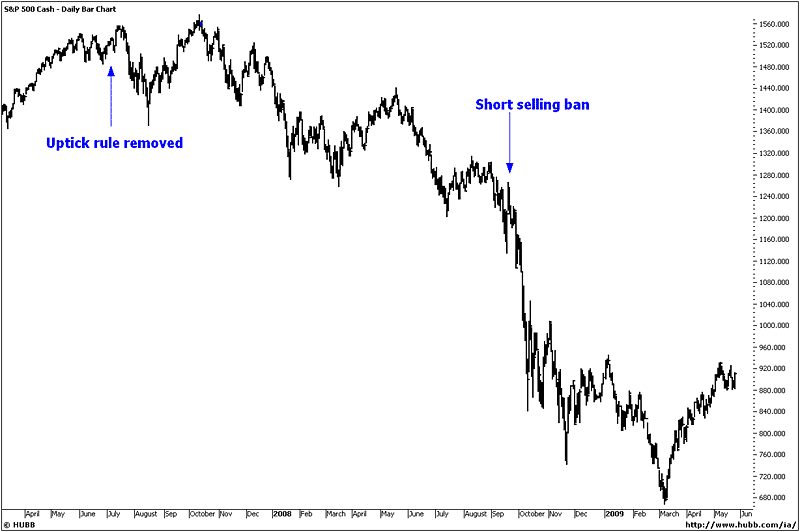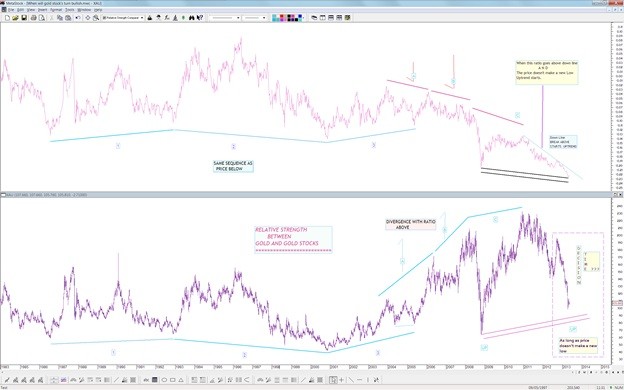The Uptick Rule
Post on: 16 Март, 2015 No Comment

Short Selling and the Uptick Rule have been in the news quite a bit lately (as of October 2008). Since the stock markets have all been declining, everyone is looking for someone, or something to put the blame on and anyone who is profiting from other peoples losses are a natural target.
The Uptick Rule is part of a financial regulation that was adopted by the U.S. Securities and Exchange commission (SEC) under the SEC Act of 1934. The rule is listed as rule 10a-1 in the regulations .
It was established to prevent short selling from occurring at consecutively lower prices without the need for there to be any buyers.
It was also designed to help prevent panic selling and drastic drops in prices in an illiquid market. The objectives of this rule were to:
- Prevent an acceleration of prices in an already declining market. Prevent short selling from being a tool to drive a stock price down. While at the same time, allow short selling to occur in an advancing market.
For further information regarding shorting stocks, read about the following topics also on this website:
Let’s take a closer look at these objectives below.
Prevent an acceleration of prices.
In an ideal market situation, there are buyers and sellers that hopefully provide fair pricing of stocks. Pricing is based on current and future fundamental and technical situations.
In a declining market, the increased negativity produces more sellers than buyers, as well as an increased number of short sellers,which lowers the price of the stock. If everyone sold their position in a particular stock at the same time, all of the potential buyers would see the panic, and let the price keep going down, drastically, before they stepped in and wanted to buy.
The Uptick Rule, stated that you could not sell short any shares of stock at a price below the previous trade price, unless the previous trade was a buyer at a higher price than the current price.
This would mean that there would have to be someone buying shares just before your order to short shares was filled.
Example: a stock is at $10.20, the next trade is at $10.19, and a person then places an order to sell short at $10.18.
With this rule in place, your order would not be filled until the trade immediately before yours, is at a higher price than $10.19, or on an Uptick, at say $10.20.
Without this rule as we have right now in 2008, there can be orders for hundreds or thousands of shares all at sequentially lower prices, which can drive down share prices dramatically without any buyers stepping in to support the price.
Prevent short selling from being a tool to drive down prices
Abuse of short selling can occur if a large fund or trader wants to deliberately drive down share prices.

Take for example someone wanting to drive down pries and cause a panic, so they can eventually buy shares at a lower price. If they had enough money that they were using, and word got out that they were shorting for specific reasons, people would eventually start selling, lowering the price.
With an Uptick Rule in place, there would have to be some sort of balance between buyers and sellers, hopefully providing a sort of equilibrium in prices.
Allow short selling to occur in an advancing market..
Having an Uptick Rule in place, allows for buyers to step in and purchase shares if they think a company is doing well.
It also allows short sellers to sell short shares of a company who they think is doing poorly, while not driving down the stock price unfairly.
With this type of rule in place there must be a steady demand for buyers and sellers in order for any short selling to occur.
What happened to the Uptick Rule?
After an investigation completed by researchers at the SEC in July 2007, the SEC decided to eliminate the Uptick Rule.
They came to the conclusion that not having this rule in place, would not cause any severe problems with liquidity, nor was it necessary to prevent price manipulation.
As I write this in September 2008, complaints about not having the Uptick Rule in place causing prices to decline sharply are all you hear about in the financial news.














